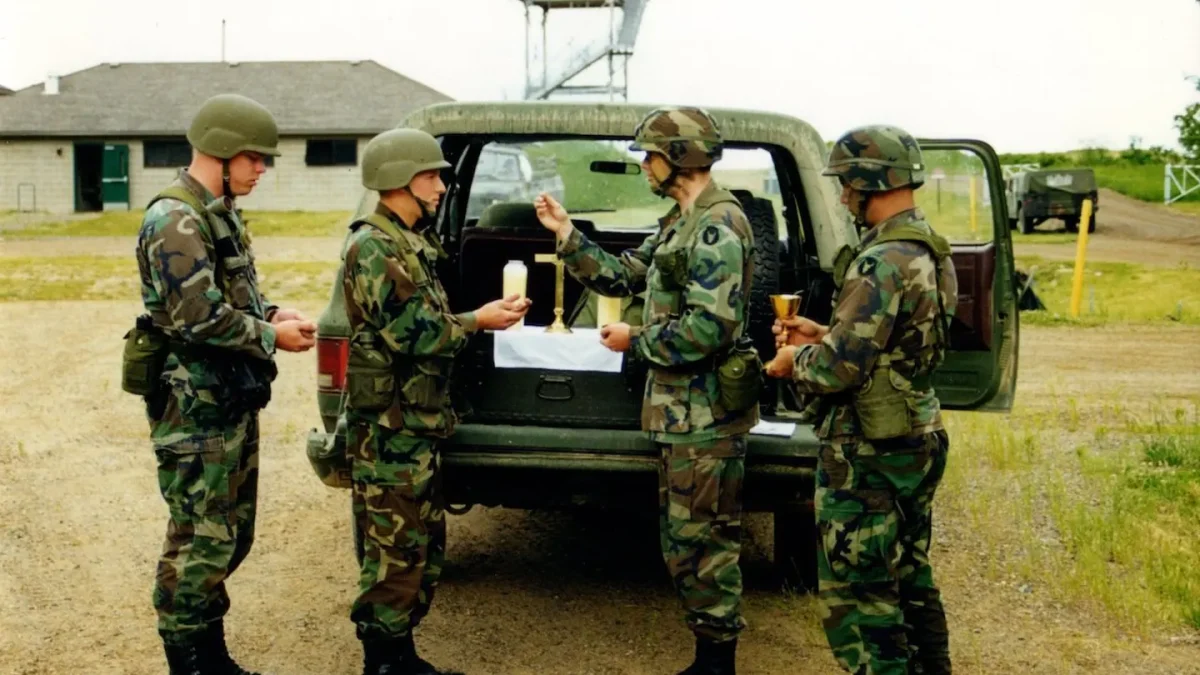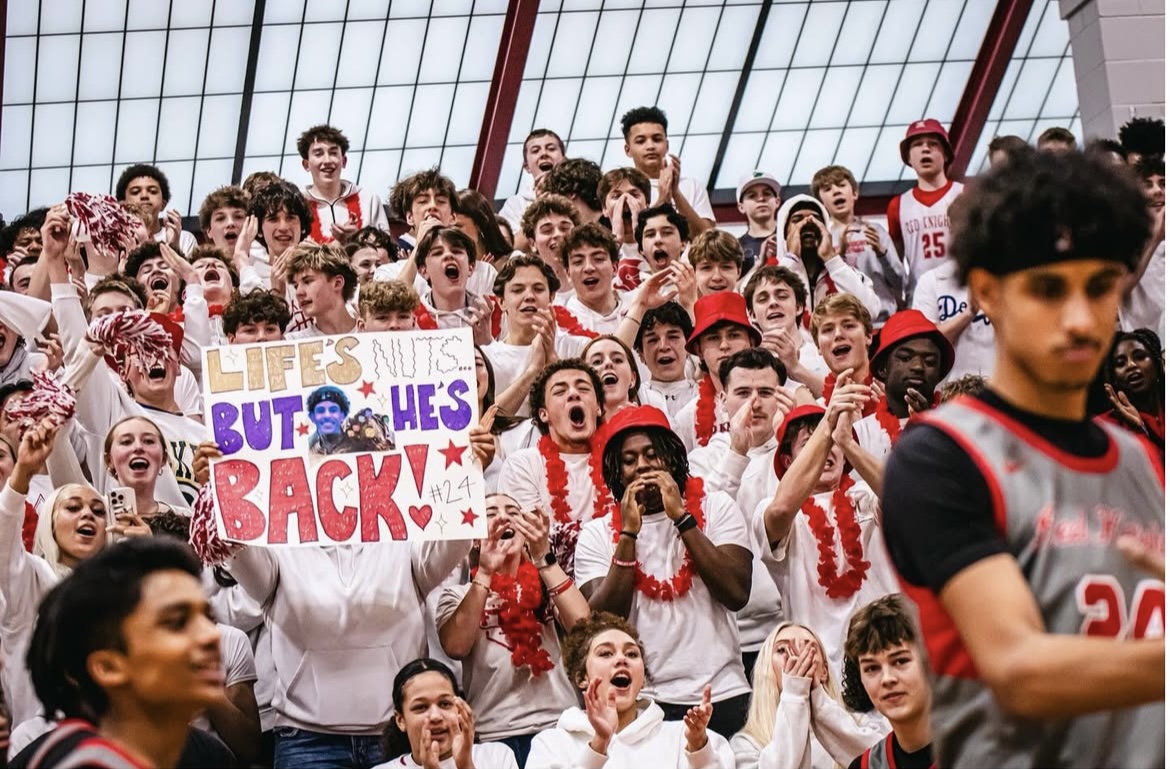Over the years, the Benilde-St. Margaret’s student section has had high energy, school spirit, and unrelenting support for competing athletes. However, in recent months, students have noticed a decline in good sportsmanship and an increase in hostile chants, gestures, and negativity. Whether this is caused by a growth in competition among teams or a lack of accountability in fan behavior, students and athletes at BSM reflect on this shift, prompting the question of why this is occurring.
The rise in hostile behavior from fans has not gone unnoticed by schools. While athletics are often seen as a point of pride, they can also clearly reflect the school’s values. When negative fan behavior dominates, it could easily destroy an entire institution’s reputation. Schools increasingly find that a toxic fan base leads to much more than just a challenging game day, and it can affect recruitment, school image, and even potential scholarships. A reputation for being hostile and disrespectful during games can make it difficult to attract students, athletes, and supporters to the school, limiting their ability to grow. “Negativity affects both the players and the school’s reputation. Some teams don’t even want to play us anymore because of the way our students act,” senior Jeremiah Johnson said.
Poor sportsmanship can stem from a combination of factors, including heightened competition, personal frustration, and pressure. In today’s world, athletes are constantly under pressure to perform, both on and off the field, but fans tend to mirror the intensity of the players. This pressure on the players can lead to certain reactions when expectations are unmet, which may turn a fun, lighthearted event into a minefield of negativity. This shift in focus from support to blame can sometimes overshadow the true spirit of the game and take away the positive energy that defines the experience.
Bad sportsmanship can also arise from the pressure to act a certain way, not only from one’s own student section but also in response to the actions of the opposing team. In many school rivalries, fans are encouraged to adopt an “Us vs. Them” mentality, where the goal isn’t just to uplift one’s team but to undermine the other. This pressure can be especially strong in student sections, where there is often a sense of collective identity and expectation to engage in behaviors that display dominance over rivals. Chants, taunts, and jeers directed at the opposing team or players are often seen by students as part of the rivalry culture, but they can very easily cross the line into being disrespectful. “We usually get so caught up in the heat of the moment and hyping up our team that we forget sports should also be about respect,” senior McKenzie McMoore said.
Simultaneously, if the opposing team is engaging in rude cheers, aggressive playing, or showboating, fans often feel the need to retaliate, deepening the hostility. This dynamic creates a never-ending cycle where both sides feel justified in their negative actions, fueled by expectations to meet. Ultimately, this shifts the focus from appreciation of athletic skill to the pursuit of humiliating the opponent. “A lot of times, people are chanting against us, and it gets in our heads and we feel like we need to fire back, which honestly just escalates the situation badly. We have learned how to go far enough without going too far,” senior captain of the BSM Spirit Squad Max Kloss said.
While the encouragement from the student section can uplift the athletes competing, the negative chants can distract them. When the atmosphere transitions to being tense and overly critical, it can make the athletes feel overwhelmed, discouraged, and mentally drained. This added pressure can ultimately affect the team’s confidence and performance, making it harder to stay focused and have fun competing. “The student section plays a huge role in the athlete’s performance because the athlete feeds off the student section. It’s the same as home-court advantage. When you’re stepping onto somebody else’s court, you can feel the energy shift. If the crowd is supportive, it hypes you up, but if they’re negative, it can throw off your game as the competitor,” Coach Joe Creer said.
Being a Catholic school, BSM emphasizes the importance of respect, community, and One BSM. However, students report that the school’s recent behavior has not reflected these core values. According to students like junior Cal Phlum, the student body allowed negativity, degrading taunts, and unsportsmanlike conduct to take over the student section. “Coming from a Catholic school, we definitely promote positive sportsmanship for sure, and we try to be responsible, but it doesn’t always result in those expectations,” Phlum said.
To improve the sportsmanship at BSM, students have suggested increasing the positive and uplifting chants and attempting to decrease the hostile gestures and chants. In addition to setting a good example for the younger students who may be in attendance at these games, students feel it is important to maintain the integrity of the BSM culture. “I think we need to get more active. You know, get more positive chants started and just be happier, and also [have] a bigger student turnout at every sport, not just the popular or winning teams,” senior Luke Savelli said.
Often high attendance and support at sporting events can demonstrate excitement and high school spirit. At BSM, students frequently show up in large numbers, creating an electrifying atmosphere regardless of the team’s performance.“There is room for improvement in sportsmanship, but no matter what, the senior high consistently brings the energy to support the players, and that’s not something you can say about other schools. Obviously, we have to uphold an image as a Catholic school, but you also want student attendance and competitiveness over everything,” Kloss said.






































![Teacher Lore: Mr. Hillman [Podcast]](https://bsmknighterrant.org/wp-content/uploads/2025/03/teacherlorelogo-1200x685.png)



